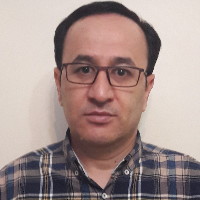Predicting the impacts of management activities on surface runoff characteristics and soil erosion in the Bonekooh Watershed – Hablehroud River_Iran
Author(s):
Article Type:
Research/Original Article (دارای رتبه معتبر)
Abstract:
Unbalanced exploitation of natural resources in Iran has led to the loss of soil and water resources. Optimal land management leads to sustainable exploitation of water and soil resources and hence reduces the depletion of these resources. The aim of this research is to develop a list of vegetation-based management activities and to predict the impacts of the activities on surface runoff characteristics and soil erosion in the Bonekooh Watershed (about 3300km2) using a modeling exercise. The predictions can assist watershed planners and managers to make appropriate decisions solving the problems in the watershed. In this research, considering the type and extent of the environmental problems in the study area and determining their relative importance, 11 management activities were chosen to solve the watershed problems. The L-THIA model and the Global Soil Loss Equation(RUSLE) model within the framework of the GIS were used to estimate the surface runoff characteristics (runoff, phosphorus and nitrate) and the amount of soil erosion, respectively. The RUSLE factors include R, K, LS, C, and P, which are calculated from rainfall data, regional soil maps, digital elevation models, and remote sensing techniques, respectively. The values of P and C factors in the RUSLE were estimated according to the standard tables provided in the relevant literature and based on expert judgment. Statistical criteria of RMSE and MAE were used to evaluate the efficiency of the models for the current status of the watershed. Subsequent to model evaluation, the models were used to predict the possible impacts of various management activities on surface runoff characteristics and soil erosion. The average values of R, K, LS and C factors for the current status were 1.85 (MJ mm ha-1h-1y-1), 0.29 (t ha h ha-1 MJ-1 mm-1), 10.82, and 0.86, respectively. Soil erosion map shows that the amount of soil erosion changes from a insignificant value to 33.49 (tons per hectare per year) in the region. Also, 11.12 percent of the total area is located in the high and very high erosion classes. Annual runoff varies from 1.12 to 9.27 cm with an average of 6.74 cm. The analysis indicates that rangeland exclusion and pile seeding management activities in the watershed will have the most impact considering all indices (surface runoff, soil erosion, Phosphorus, Nitrate). But per unit of management activities, forage cultivation, afforestation, and orchard development have the most impact on runoff depth index, respectively. Additionally, considering both soil erosion and phosphorus indices, orchard development, afforestation, and forage cultivation activities will have the best performance, respectively. In addition, in terms of nitrate index, orchard development, afforestation and riparian activities will present maximum differences with the index value for the current status of the watershed. Implementing of all management activities will result a decrease of runoff depth by about 13.20% and a reduction of soil erosion by 8.30% in the watershed. Given the topographic and morphologic conditions of the Bonekooh watershed, and also natural and human-made erosion factors for the watershed, critical areas should be considered in order to prevent the loss of soil and water resources. Because of existing water and soil resources problems in the Bonekooh Watershed, it is required to implement appropriate management activities to fix the problem. Due to the vast extent of areas being suitable for implementing rangeland exclusion and pile seeding activities in the watershed, these activities have the greatest impact on improvement of surface runoff characteristics and soil erosion. To make an improved decision in choosing the best management activities, it is suggested to consider other impacts arising from implementing the activities at the watershed scale from economic, social and ecological point of views.
Keywords:
Language:
Persian
Published:
Water and Soil Conservation, Volume:26 Issue: 1, 2019
Pages:
27 to 48
magiran.com/p1988009
دانلود و مطالعه متن این مقاله با یکی از روشهای زیر امکان پذیر است:
اشتراک شخصی
با عضویت و پرداخت آنلاین حق اشتراک یکساله به مبلغ 1,390,000ريال میتوانید 70 عنوان مطلب دانلود کنید!
اشتراک سازمانی
به کتابخانه دانشگاه یا محل کار خود پیشنهاد کنید تا اشتراک سازمانی این پایگاه را برای دسترسی نامحدود همه کاربران به متن مطالب تهیه نمایند!
توجه!
- حق عضویت دریافتی صرف حمایت از نشریات عضو و نگهداری، تکمیل و توسعه مگیران میشود.
- پرداخت حق اشتراک و دانلود مقالات اجازه بازنشر آن در سایر رسانههای چاپی و دیجیتال را به کاربر نمیدهد.
In order to view content subscription is required
Personal subscription
Subscribe magiran.com for 70 € euros via PayPal and download 70 articles during a year.
Organization subscription
Please contact us to subscribe your university or library for unlimited access!



